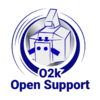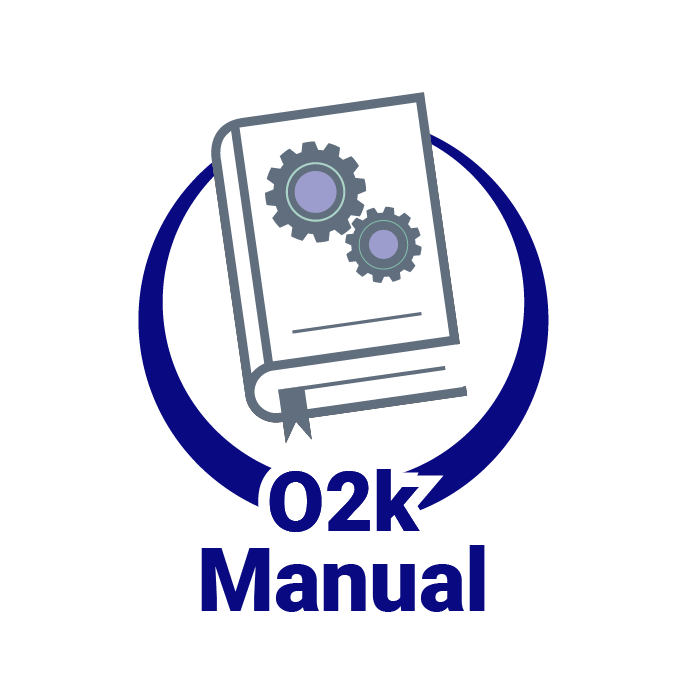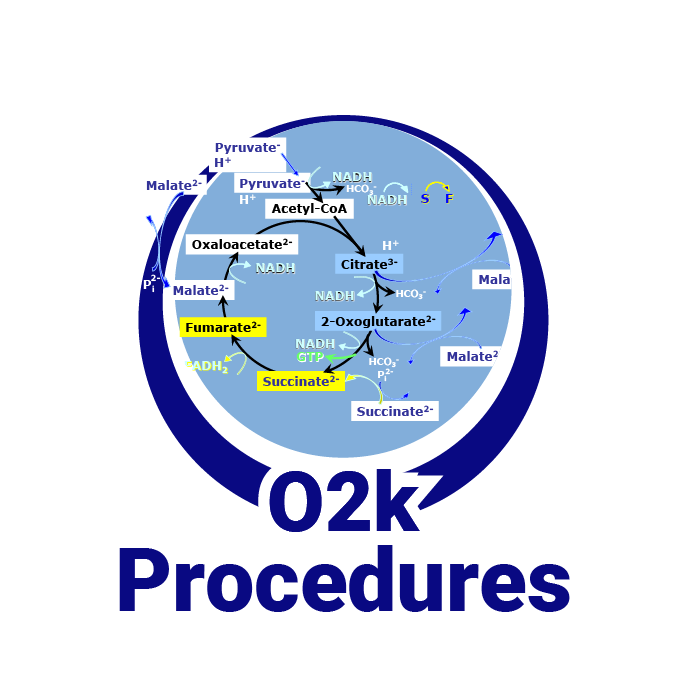 |
Layout - DatLab |
Last update: 2024-10-24
Description
DatLab 8: Graph layouts are selected for standardized display of graphs, plots and scaling of axes. When using DL8-Protocols (.dlp8) the recommended initial layout is already loaded according to the specific DL8-Protocol. Layouts can be further selected, modified and managed through the top menu Layout.
DatLab 7: Layout - DatLab 7
Reference: MitoPedia: DatLab
Standard layouts
In standard layouts of only O2 measurements, plots are shown for chamber A in Graph 1 (top), and for chamber B in Graph 2 (below Graph 1). In multi-sensor measurements, plots for O2 are shown in Graph 1 (Chamber A) and Graph 3 (Chamber B) and plots for the additional module are shown in Graph 2 (Chamber A) and Graph 4 (Chamber B). During data acquisition, a 30-min time range is frequently used.
Standard layouts are divided according to the different channels recorded and modules used:
- O2 only
- Fluorimetric: O2 and Fluo channel (Fluo Smart-Module or Fluo LED2-Module)
- Amperometric: O2 and Amp channel (NO-Module)
- Potentiometric: O2 and pX channel (ISE TPP-Module and ISE pH-Module)
- Q: O2 and Q channel (Q-Module)
- NADH: O2 and Fluo channel (NADH-Module)
- Photobiology: O2 and PB channel (light intensity) (PB-Module)
Layouts for O2 only
- 01 Calibration show Temp shows O2 concentration and the O2 slope negative (no background correction applied). Temperature and Peltier power are shown in Graph 3. This is the default layout used after switching on the O2k for performing oxygen calibration.
- 02 Calibration - Background is used for recording of oxygen calibration and instrumental O2 background test. O2 slope negative is the negative slope of oxygen concentration, multiplied by 1000 to convert to units [pmol/mL], over time [s]. No correction is applied for instrumental O2 background flux, J°02. Zero slope in the 'open' chamber at air calibration indicates the stability of the oxygen signal. After closing the chamber, the slope deviates from zero as a function of the oxygen consumption of the polarographic oxygen sensor and of oxygen diffusion into or out of the chamber, which is the first point in the instrumental O2 background test (MiPNet14.06 Instrumental O2 background).
- 03 Background high O2 for recording an instrumental O2 background test at high oxygen from 150 to 450 µM. O2 slope negative (no background correction applied).
- 04 Flux per volume displays O2 flux per volume, which is most relevant to evaluate experimental details, i.e. flux per volume is optimally in the range of 20 to 200-500 pmol∙s-1∙mL-1. This layout is also chosen when measurements on sample concentration are available only at a later stage (MiPNet24.06). Total O2 flux is corrected for instrumental O2 background, J°O2,V, to obtain sample oxygen flux per chamber volume, JO2,V:
- JO2,V = JO2,V(total) - J°O2,V
- 05 Specific flux displays background-corrected O2 flux/flow per unit sample. The unit as a marker for the amount of sample is defined in the normalization section of Sample and medium window . Example: After setting a predefined normalization (wet mass, unit mg), the concentration or amount of sample can be entered in the corresponding field. The wet mass-specific flux [pmol∙s-1∙mg-1], calculated as volume-specific flux [pmol∙s-1∙mL-1] divided by mass-concentration [mg/mL]:
- JO2,m = JO2,V / mass-concentration
- 06 Specific flux high O2 displays a similar layout as for ‘05 Specific flux’ with the scaling adapted to the high O2 concentration (150 to 450 µM; range 300 µM; e.g permeabilized muscle fibers).
- 07 Flux control ratios: The marks for the reference and baseline respiratory states need to be set and selected in the Flux/slope window under ‘Baseline correction’ and ‘Flux control ratio (FCR)’
- O2 raw signal shows the O2 raw signal expressed in µA.
User layouts
A modified standard layout or any other layout can be saved under a specific user name, which is recommended to distinguish individual layouts from standard layouts used by a team. A list of saved user layouts is displayed in the corresponding menu under “Layouts” and can be managed (renamed, exported, deleted or imported). An imported or exported layout has the .dll8 extension.
Lab layouts
A modified standard layout or any other layout can be saved under Lab layouts, which is recommended for a team using project-specific layouts. A list of saved lab layouts is displayed in the corresponding menu under “Layouts” and can be managed (renamed, exported, deleted or imported). An imported or exported layout has the .dll8 extension.
Recent layouts
It shows a list of the 5 most recent used layouts compatible with the current Oroboros configuration.
MitoPedia: DatLab, Oroboros Open Support








